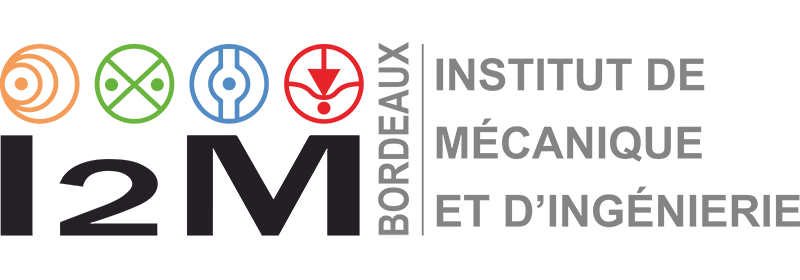12 Octobre – Soutenance Thèse Yibiao Wang
10 h30 ENSAM (Amphi A)
Subject : Numerical study of the correction to Darcy's law for inertial single-phase flow in porous media
Membres du jury:
M. Alessandro BOTTARO | Professor of University, University of Genoa | Rapporteur |
M. Benoit GOYEAU | Professor of University, Université Paris-Saclay | Rapporteur |
M. Michel QUINTARD | Research Director, Université Toulouse | |
Mme. Azita AHMADI | Professor of University, Arts et Metiérs ParisTech | Directeur de Thèse |
M. Didier LASSEUX | Research Director, Université de Bordeaux | Co-encadrant |
Abstract:
It is well acknowledged that inertial (non-Darcy flow) plays an important role in many diverse fields of science and engineering, ranging from chemical engineering to agricultural science and petroleum industry. Forchheimer equations, in which a non-linear correction term has been added to include the deviation from Darcy's law, have been widely adopted to describe the inertial flows in the above mentioned processes. According to many studies, the non-linear correction is strongly related to pore geometry, therefore, it is essential to carry out a detailed study of the effect of pore geometry on the flow through porous media.
The aim of this work is to study the steady and unsteady inertial flow through various spatially periodic pore structures, both 2D and 3D. A brief introduction of the physical mechanisms of inertial flow in porous media is given and the related main studies are reviewed in the first chapter. Then, in Chapter 2, the physical models (governing equations combined with the volume average method) and the numerical techniques in the numerical tools (OpenFOAM and COMSOL) are explained. Chapter 3 is mainly focused on unsteady simulations of inertial flow through 2D model pore structures. This chapter consists of two parts. The first part is the determination of critical Reynolds number, at which the flow becomes unsteady, for 2D Globally Disordered (GD) pore structures. While increasing the Reynolds number, other types of flow regimes, which are beyond the steady laminar flow, start to take control of the flow, each of them in a corresponding Reynolds number range. Therefore, the second part deals with the flow from steady laminar to turbulent, taking into account the size of the Representative Elementary Volume (REV) of 2D Ordered array of periodically arranged Square cylinders (OS). GD pore structures are also considered to investigate the flow nature. In Chapter 4, the inertial laminar flow, constricted to steady state according to the critical Reynolds number obtained in Chapter 3, is investigated in both 2D and 3D model geometries. Numerical results are compared with data on other types of structures reported in previous studies to explore the effect of structural disorder on the flow. In addition, 3D effect on the flow is explored. Main conclusions and perspectives are given in Chapter 5.






